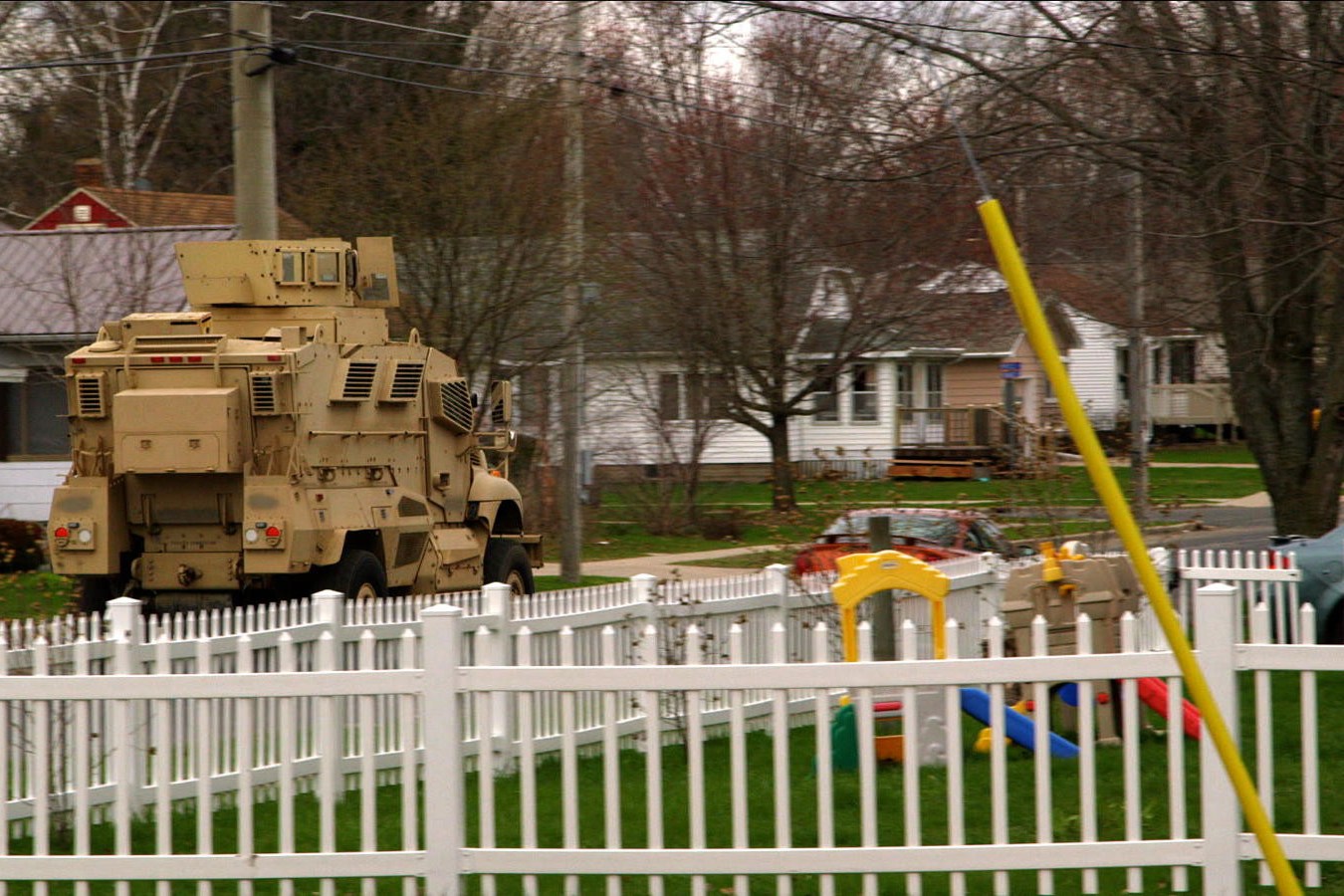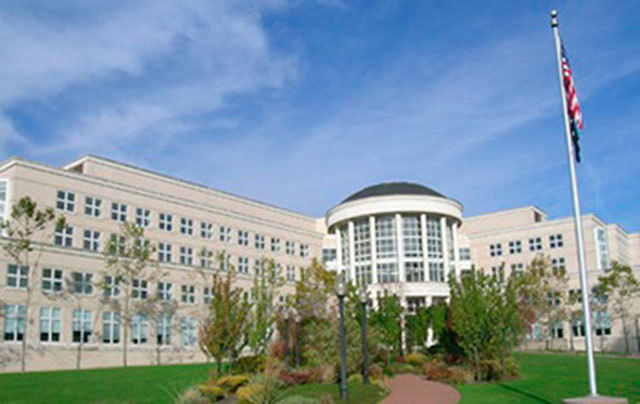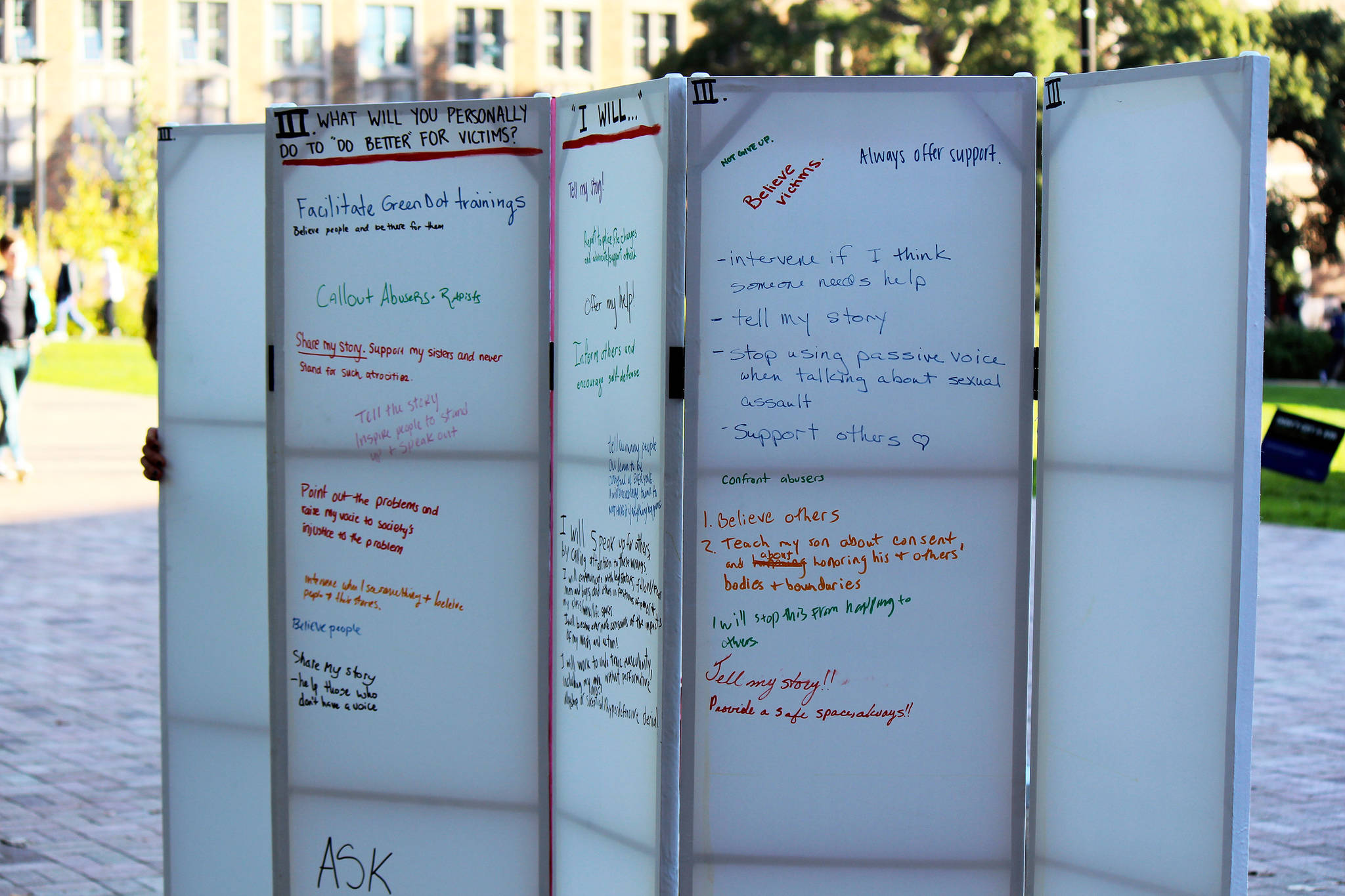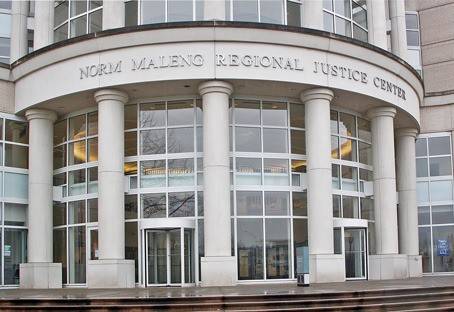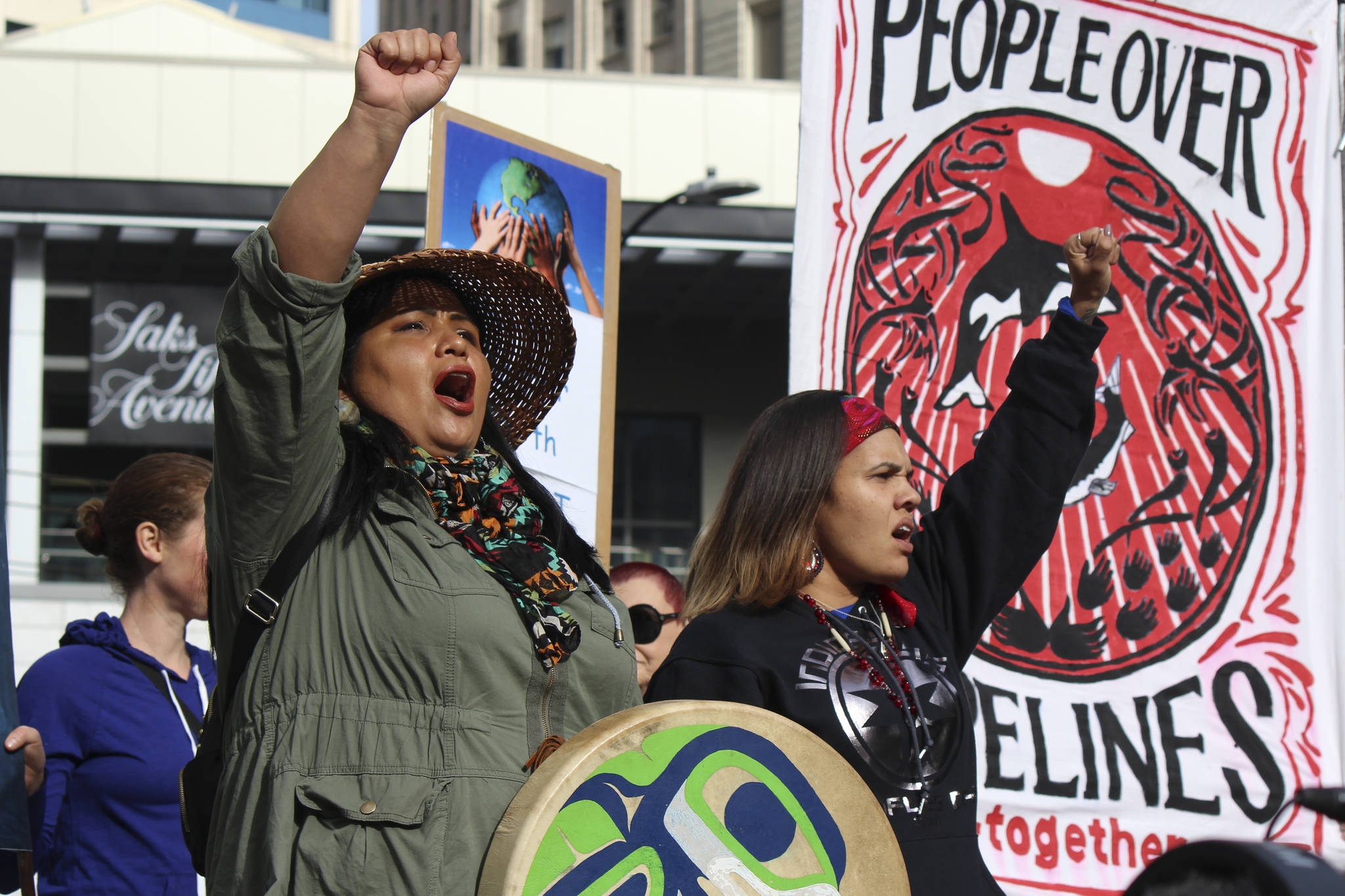In the opening scene of Do Not Resist, we’re in Ferguson, Mo., on August 19, 2014. Ten days after 18-year-old Michael Brown was shot to death by police officer Darren Wilson, hundreds of protesters fill the streets, marching and chanting, arms in the air, angry signs aloft. The night sky roils with thunderheads and flashes with orange-hued lightning—or is it a series of blasts beyond the wall of cops? For a moment, it’s hard to tell. Then raindrops fall on the faces of unarmed civilians, and the helmeted police—many wearing gas masks, holding assault rifles, and riding in military-grade vehicles—threaten to arrest the protesters for breaking a midnight curfew.
“We aren’t doing anything wrong!” shouts one protester into a megaphone. Suddenly the air is crisscrossed with mini-explosions, the stinging smoke trails of tear-gas canisters are lit up in police-car highbeams, and the camera itself swivels to the ground as the crowd screams away.
If Ferguson in August 2014 does not look like a war-torn country under military rule, I don’t know what does.
Relying primarily on raw, vérité footage like this without narration, launching a searing commentary without saying a word, cinematographer Craig Atkinson’s directorial debut is masterful in its restraint. It is a clear, cold-eyed documentary that with only a few well-placed lines of text gives us just enough factual information to place each scene firmly in a terrifying context. Through unprecedented access to police trainings, interviews, ride-alongs, boot camps, and acquired footage from U.S. Senate hearings and city council meetings, the film presents, often from the inside out, just how much closer our small-town police forces have become to the half-a-trillion-dollar (per year) U.S. military.
Since 9/11, for instance, the Department of Homeland Security (DHS) has offered local police departments $34 billion in grants to purchase military equipment. Mine-Resistant Ambush Protected (MRAP) vehicles, designed for military use, are available for free under the program. In the film, we see FBI Director James Comey telling a room full of police chiefs that “Monsters are real” and “We need equipment to respond to this metastasizing and changing threat.” Dave Grossman, a top military trainer, tells an audience of cops-to-be that it’s their job to fight violence with “superior violence; righteous violence.” Police officers attend SWAT trainings that resemble boot camps for the U.S. Army or Marines, then ready themselves for small-town drug busts with an urgency that mirrors a military assault.
The film trains its eye, and therefore rests its case, again and again, on stark juxtapositions. An MRAP vehicle barrels down a quiet residential street, lined with green lawns, white picket fences, and a child’s plastic playset. A dozen white cops arm themselves with riot gear and pile into an MRAP vehicle, then pour out onto a black family’s home, smashing windows and handcuffing a young man, all—as the man’s mother later puts it—for “a gram and a half of weed that fell out of the bottom of a bookbag.”
A line of text, landing us in contemporary Concord, N.H., tells us that the town has had two murders since 2004. Then we watch the Concord City Council sit down to accept a DHS grant to acquire a $250,000 “Ballistic Engineered Armored Response Counter Attack Truck.” Taken together, it is truly haunting. Then the film veers into the next wave of policing: the possibility that high-level surveillance technology used in American military operations will also be transferred to local police departments. A professor of criminology warns that this and other high-tech policing is “inevitable,” all while cop trainer Dave Grossman promises to quash, forever, “the idiots who want to disarm the police.”
You’d almost want to call this film a call to arms, if it weren’t so overtly a call to disarm. Even those viewers who already share the film’s ideology are likely to feel shocked by what it reveals. As you might imagine, then, from its start, but especially by its finish, Do Not Resist has a very clear message: Resist. Do Not Resist. Unrated. Northwest Film Forum, 1515 12th Ave., nwfilmforum.org. $6–$11. 7:30 p.m. Wed., Oct. 26–Thurs., Oct 27.
sbernard@seattleweekly.com
